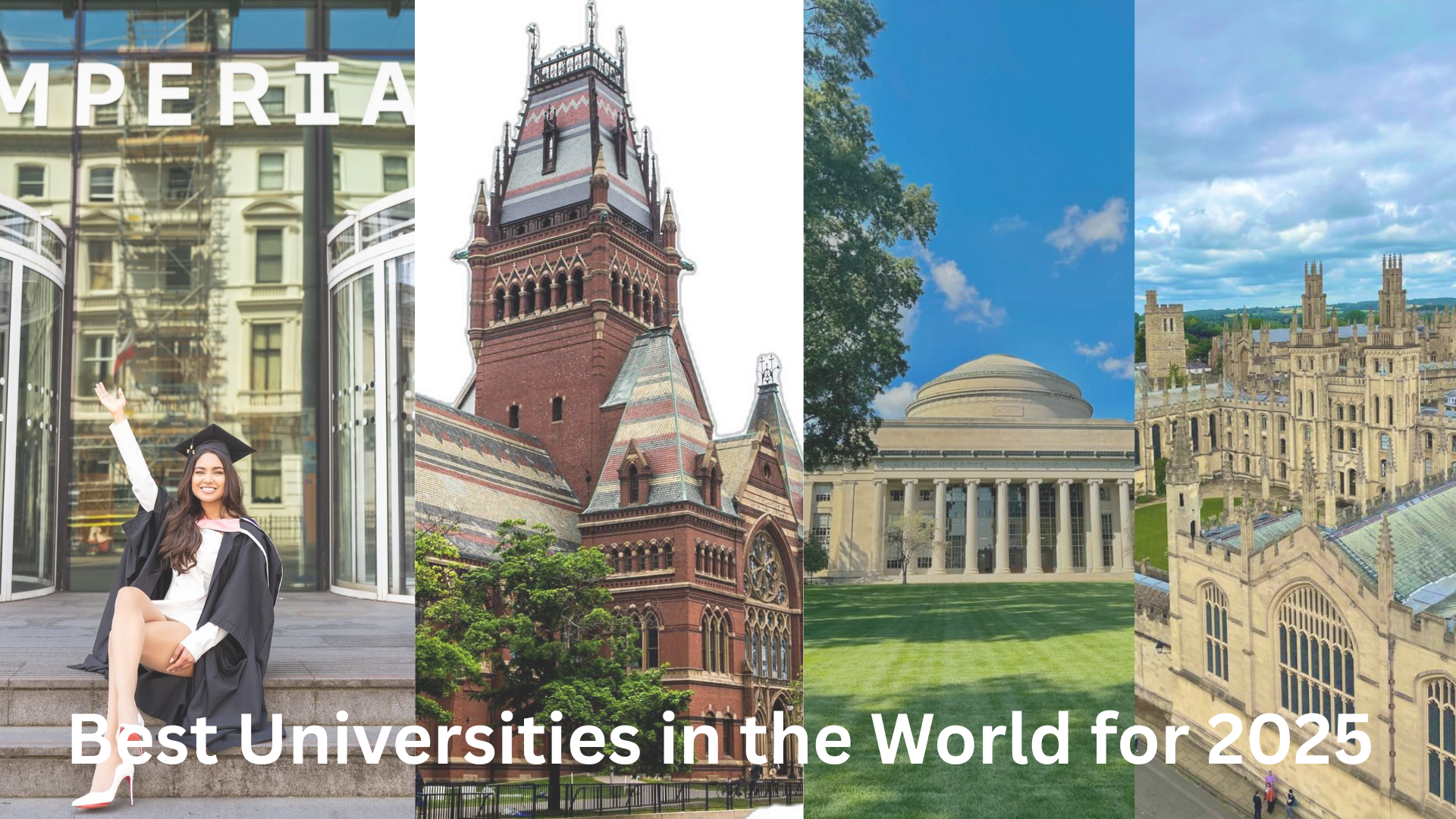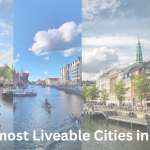The QS World University Rankings 2025 highlight the globe’s top academic institutions, with Massachusetts Institute of Technology (MIT) leading for the 13th consecutive year. These universities—MIT, Imperial College London, Oxford, Harvard, Cambridge, Stanford, ETH Zurich, NUS, UCL, and Caltech—excel in academic reputation, research output, and global impact. This article explores why these institutions rank highest, their unique strengths, and tips for prospective students, drawing on data from QS and other sources.
1. Massachusetts Institute of Technology (MIT), USA (QS Score: 100)
MIT, in Cambridge, Massachusetts, retains its No. 1 spot with a perfect QS score of 100. Founded in 1861, MIT’s 1,000 faculty and 11,000 students drive innovation in STEM fields, boasting 85 Nobel laureates and a 10% acceptance rate. Its interdisciplinary approach, with six schools including engineering and computing, fosters breakthroughs like AI advancements. Tuition averages $60,000/year, but 90% of students receive financial aid. Apply with a 3.9+ GPA and strong SAT scores (1530+). Visit in fall for campus tours and hackathons.
2. Imperial College London, UK (QS Score: 99.4)
Imperial College London, jumping four places to second, excels in sustainability (99.7/100) and research citations (93.9/100). Focused on science, engineering, medicine, and business, it hosts 17,000 students, 40% international, and offers need-based grants. Located in London’s South Kensington, its alumni include 14 Nobel laureates. Tuition is £35,000-$50,000/year, with Commonwealth Scholarships for eligible students. Apply with A*AA A-levels or 40+ IB scores. Spring visits showcase its cutting-edge labs.
3. University of Oxford, UK (QS Score: 97.9)
Oxford, third in QS rankings, is the oldest English-speaking university (founded 1096), with 40% international students across 31 colleges. Its tutorial-based teaching and research excellence in humanities, sciences, and medicine produce 72 Nobel laureates. Tuition is £28,000-$40,000/year, with Chevening Scholarships available. Apply with A*AA A-levels or 40+ IB scores; a compelling Statement of Purpose is key. Visit in autumn for open days and historic tours of its Gothic libraries.
4. Harvard University, USA (QS Score: 97.7)
Harvard, in Cambridge, Massachusetts, ranks fourth with a perfect academic reputation score (100/100). Founded in 1636, it’s the oldest U.S. university, with 38 Nobel and 48 Pulitzer winners among alumni, including eight U.S. presidents. Its 21,000 students access diverse programs in law, business, and medicine. Tuition averages $59,000/year, with 80% receiving aid. Apply with a 3.8+ GPA and 1520+ SAT. Fall campus visits highlight its vibrant student life and historic Yard.
5. University of Cambridge, UK (QS Score: 97.2)
Cambridge, founded in 1209, ranks fifth with 92 Nobel affiliates and a collegiate system of 31 colleges. Its supervision-based teaching excels in sciences, humanities, and engineering. With 19,000 students, 35% international, it offers Chevening and Gates scholarships. Tuition is £25,000-$38,000/year. Apply with A*AA A-levels or 40+ IB scores. Visit in spring for punting on the River Cam and tours of King’s College Chapel, a Gothic masterpiece.
6. Stanford University, USA (QS Score: 98.9)
Stanford, in Silicon Valley, climbs to third in QS 2026 rankings due to sustainability and international faculty improvements. Its 16,000 students, with an 80% aid rate, drive tech innovation, with alumni founding companies generating $2.7 trillion annually. Tuition is $58,000/year; apply with a 3.9+ GPA and 1520+ SAT. Stanford’s entrepreneurial spirit shines in computer science and business. Visit in summer for its palm-lined campus and startup events.
7. ETH Zurich, Switzerland (QS Score: 96.7)
ETH Zurich, Europe’s top tech university, ranks seventh, excelling in engineering and natural sciences. With 22,000 students, 40% international, it boasts 21 Nobel laureates, including Albert Einstein. Tuition is low ($1,500/year for MSc), but living costs in Zurich are high ($2,000/month). Apply with a 320+ GRE score. Visit in fall for its cutting-edge labs and scenic Limmat River views, with English-taught programs attracting global talent.
8. National University of Singapore (NUS) (QS Score: 95.9)
NUS, Asia’s leading university, ranks eighth with strengths in research and global engagement. Its 38,000 students, 30% international, study across 17 faculties, with programs in engineering and computer science standing out. Tuition is SGD 20,000-$40,000/year ($15,000-$30,000 USD), with scholarships for non-Singaporeans. Apply with a 3.7+ GPA and strong SAT/IB scores. Visit in spring for its lush campus and vibrant Marina Bay events.
9. University College London (UCL), UK (QS Score: 95.8)
UCL, in London’s Bloomsbury, ranks ninth with a diverse student body (50% international) and research-intensive programs in medicine, law, and social sciences. Its 42,000 students benefit from industry ties and a global outlook. Tuition is £26,000-$41,000/year, with bursaries available. Apply with A*AA A-levels or 38+ IB scores. Visit in autumn for its cultural proximity to the British Museum and vibrant student life.
10. California Institute of Technology (Caltech), USA (QS Score: 94.3)
Caltech, in Pasadena, California, ranks tenth despite its small size (2,200 students). Known for science and engineering, it has 46 Nobel laureates and a 3:1 student-faculty ratio. Tuition is $60,000/year, with 98% of students receiving aid. Apply with a 3.9+ GPA and 1550+ SAT. Its innovative tools tackle global challenges, and its Jet Propulsion Laboratory leads space research. Visit in spring for its intimate campus and sunny vibe.
Why These Universities Stand Out
These universities dominate due to academic reputation, research output, and employability. MIT and Stanford lead in STEM and innovation, with perfect academic reputation scores. Oxford and Cambridge excel in teaching and humanities, while Imperial and ETH Zurich shine in engineering. NUS represents Asia’s rise, with Peking and Tsinghua also climbing (14th and 17th). The U.S. holds 31-33 top-100 spots, the UK 9, per QS data. Metrics like citations per faculty (MIT: 99.9/100) and international diversity (UCL: 97/100) drive rankings. Challenges include high tuition (U.S. averages $50,000-$60,000) and selective admissions (Harvard: 3.2% acceptance rate).
Key Features
- Academic Excellence: MIT, Harvard, and Oxford score 100 in academic reputation, per QS.
- Research Impact: Caltech and ETH Zurich lead in citations, with 90+ Nobel laureates across the top 10.
- Global Networks: NUS and UCL’s international student ratios (30-50%) foster diversity.
- Employability: Stanford and Harvard alumni lead global industries, per Times Higher Education’s 2025 employability rankings.
- Sustainability: Imperial’s 99.7 sustainability score reflects green initiatives.
Tips for Prospective Students
- Admissions: Maintain a 3.8+ GPA, 1500+ SAT, or 38+ IB. Strong essays and extracurriculars (e.g., Olympiads for MIT) are crucial.
- Scholarships: Apply for need-based aid (Stanford, Caltech) or merit-based awards (Chevening for UK, Gates for Cambridge).
- Visit: Attend open days (Oxford, UCL) or virtual tours (MIT, NUS) to assess fit.
- Prepare: Check IELTS/TOEFL requirements (7.0+ for UK, 100+ for U.S.) and GRE for ETH Zurich.
- Network: Leverage alumni events or platforms like LinkedIn for insights, especially for Harvard or Stanford.
Conclusion
The top 10 universities for 2025—MIT, Imperial, Oxford, and beyond—offer unmatched education, research, and career opportunities. From Cambridge’s historic colleges to Stanford’s Silicon Valley hub, each provides a unique path to success. High costs and selective admissions are hurdles, but scholarships and strategic planning make them accessible. Aspiring students should aim high, prepare rigorously, and explore these global leaders for a transformative academic journey.














